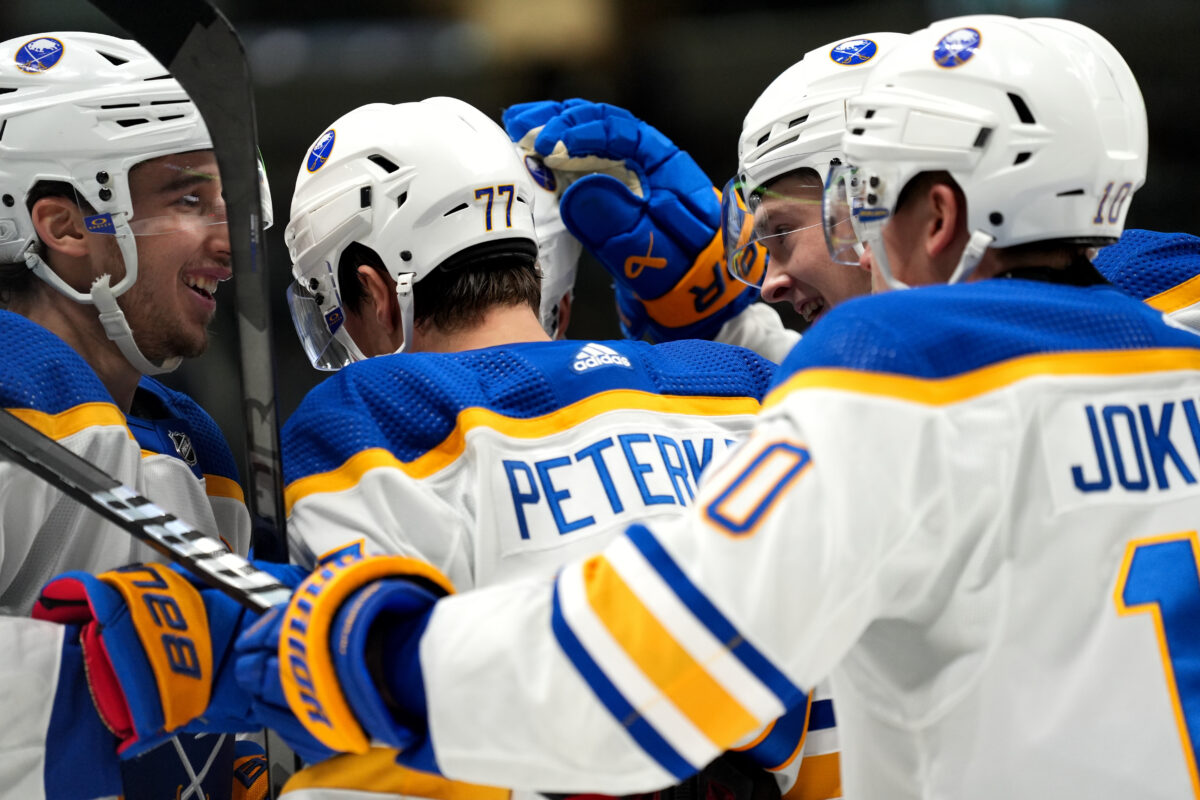Most professional sports leagues adopt rule changes as they adapt to new generations of athletes and fans. In the NHL, changing the point system is long overdue.
What Is the 3-2-1 System?
The NHL awards two points for a win, one point for an overtime/shootout (OT/SO) loss, and zero for a regulation loss. Since two overtime losses are worth as much as a win, some teams get a boost up the standings despite having fewer wins than the teams below them. This shouldn’t be the case.
The point system also skews the coveted .500 mark. The Buffalo Sabres, who finished last season with a 39-37-6 record, won only 47.5% of their games. In theory, a team could lose 81 games in overtime, win their 82nd, finish 1-0-81, and some would consider them “above .500”. A situation that extreme won’t happen, but it shows the flaw in the system.

The 3-2-1 system would fix that, awarding three points for a regulation victory, two points for an OT/SO victory, one point for an OT/SO loss, and zero for a regulation loss. This system is already used by the International Ice Hockey Federation (IIHF) and some professional leagues in Europe.
It helps to separate the better teams from the weaker ones, by rewarding regulation dominance. The Toronto Maple Leafs led the league with five shootout wins last season, giving them an added ten points. In this new system, that means they still would have left five points on the table, since that extra regulation point is no longer up for grabs. Abolishing the shootout is another matter that we won’t discuss here. Check out Mark Scheig’s convincing argument.
Related: A Hockey Fan’s Travel Guide to New York City
Here’s what the 2023-24 NHL standings would have looked like using the 3-2-1 system:
(Regulation Wins – OT/SO Wins – OT/SO Losses – Regulation Losses)
Atlantic Division
FLA – 42-10-6-24 (152 Pts)
BOS – 36-11-15-20 (145 Pts)
TBL – 37-8-8-29 (135 Pts) ⬆1
TOR – 33-13-10-26 (135 Pts) ⬇1
DET – 27-14-9-32 (118 Pts)
BUF – 33-6-6-37 (117 Pts)
OTT – 25-12-4-41 (103 Pts)
MTL – 20-10-16-36 (96 Pts)
Metropolitan Division
NYR – 43-12-4-23 (157 Pts)
CAR – 44-8-7-23 (155 Pts)
WSH – 32-8-11-31 (123 Pts) ⬆1
NYI – 29-10-16-27 (123 Pts) ⬇1
PIT – 32-6-12-32 (120 Pts)
PHI – 30-8-11-33 (117 Pts)
NJD – 33-5-5-39 (114 Pts)
CBJ – 21-6-12-43 (87 Pts)
Central Division
WPG – 46-6-6-24 (156 Pts) ⬆1
DAL – 40-12-9-21 (153 Pts) ⬇1
COL – 42-8-7-25 (149 Pts)
NSH – 38-9-5-30 (137 Pts)
STL – 31-12-6-33 (123 Pts)
MIN – 32-7-10-33 (120 Pts)
ARI – 28-8-5-41 (105 Pts)
CHI – 17-6-6-53 (69 Pts)
Pacific Division
VAN – 44-6-9-23 (153 Pts)
EDM – 39-10-6-27 (143 Pts)
LAK – 37-7-11-27 (136 Pts)
VGK – 34-11-8-29 (132 Pts)
CGY – 32-6-5-39 (113 Pts)
SEA – 28-6-13-35 (109 Pts)
ANA – 21-6-5-50 (80 Pts)
SJS – 14-5-9-54 (61 Pts)
Outcomes of 3-2-1 System
The new system wouldn’t change the standings dramatically, but it would right some wrongs. With three more regulation wins, the Washington Capitals would have passed the New York Islanders and avoided playing the New York Rangers in the first round of the Stanley Cup playoffs. However, the Islanders would still have been a wild-card team because winning in overtime is still rewarded, just not as heavily.
The Winnipeg Jets would have finished first in the Central Division and second in the NHL. They had six more regulation wins than the Dallas Stars but finished three points behind them. The Tampa Bay Lightning would have also finished ahead of the Maple Leafs, thanks to four extra regulation victories. But the New Jersey Devils still would have finished seventh in their division, because, despite having the third-most regulation wins in the Metro (33), they did not get enough games to overtime to grab some points rather than none.
That’s why the new system would present a perfect balance. It would also change the way teams approach late-game scenarios. It may not be as beneficial to tighten up the defense and stall in the third period when the game is tied, because teams would be leaving at least one point off the table. Finally, the 3-2-1 system would make the late-season playoff push even more exciting, as a twelve-point deficit could (technically) be made up in as little as four games.
Rule changes in other sports have allowed their game to flourish. Whether it’s the “pitch clock” and “extra wild-card team” in Major League Baseball (MLB), the “new kickoff” in the National Football League (NFL), or the “Play-In Series” for the National Basketball Association (NBA), immense changes are constantly happening. It’s time for the NHL to follow suit.
